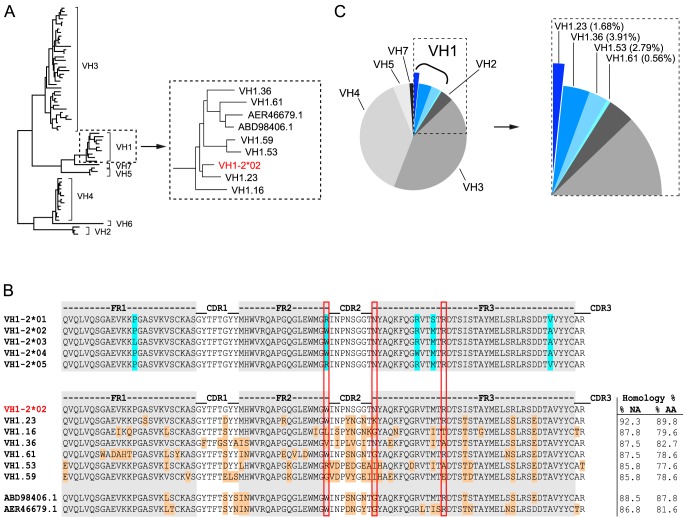Figure 1. NHP VH1 gene segment usage.
(A) Phylogenetic representation of known rhesus macaque VH germline sequences. The VH1 family is boxed and shown in a magnified view to highlight the VH1 rhesus macaque germline sequences in relation to the human VH1-2*02 germline sequence (red). (B) Sequence alignments of all known human VH1-2 alleles are shown in the top panel. Framework (FR) regions are shaded in gray with the amino acid differences between the alleles highlighted in blue. Sequence alignments of the human VH1-2*02 germline sequence with the known rhesus VH1 germline sequences are shown in the lower panel. Differences between human VH1-2*02 and the rhesus germline sequences are highlighted in orange and the percentage nucleic acid (NA) and amino acid (AA) homologies are indicated to the right after each germline sequence. The W50/N58/R71 motif, which is typically present in VH1-2*02-using bNAbs, is highlighted by the vertical red boxes. (C) Pie-chart indicating the family usage of 179 VH sequences isolated from animal F128. Sequence “slices” belonging to the VH1 family are boxed and highlighted in different shades of blue. The percentage of sequences annotated to a given germline gene segment within the VH1 family is indicated in parentheses in the magnified view to the right.

